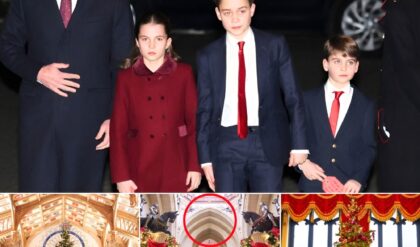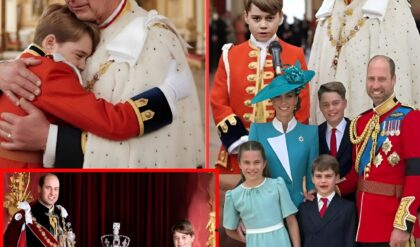In The Lord of the Rings, Middle-earth is no stranger to enormous creatures. From the Balrog of Moria to Shelob in Mordor, Tokien’s world is filled with oversized monstrosities that terrorize those unfortunate enough to cross their paths. One such creature was the dragon Smaug, who claimed Erebor and all of its wealth from the Dwarves with relative ease. Despite Smaug’s gargantuan size, the dragon was nowhere near the largest creature ever to roam Middle-earth, as another member of his species takes that trophy by a landslide.
The Hobbit never provides a specific size for Smaug. However, from J.R.R. Tolkien’s drawings and notes, it’s assumed the dragon’s depiction in the Peter Jackson trilogy is pretty accurate. Smaug was able to fit in the door to Erebor but was also large enough to destroy most of Lake-town when he fell from being shot by Bard the Bowman. Being one of the few dragons left in Middle-earth, it’s fair to assume Smaug was the biggest dragon to roam the world during Bilbo’s lifetime, and his propensity for self-aggrandizement meant that he would eagerly play that up, as he did to Bilbo when the Hobbit intruded upon his horde. However, through the history of Middle-earth compiled in The Silmarillion, it’s clear that Smaug would have appeared little more than a rodent in comparison to Ancalagon the Black: a much older dragon big enough to conceivably have destroyed the world itself.
Updated on September 11, 2024, by Ajay Aravind: Tolkien’s Lord of the Rings isn’t limited to the titular trilogy — on the contrary, the fictional universe of Middle-earth is extremely vast and culturally diverse. Countless events have transpired over the course of history, splitting the timeline into the First, Second, Third, and Fourth Ages. As such, these malevolent creatures remained part of the internal discourse for thousands of years after. Dragons come in a wide range of shapes and sizes; some of the earlier ones were even wingless worms. All things considered, however, only one Lord of the Rings dragon deserves the distinction of being the greatest.
Morgoth Created The Race Of Dragons Through Unknown Means
Most Of Them Were Born Before Or During The First Age
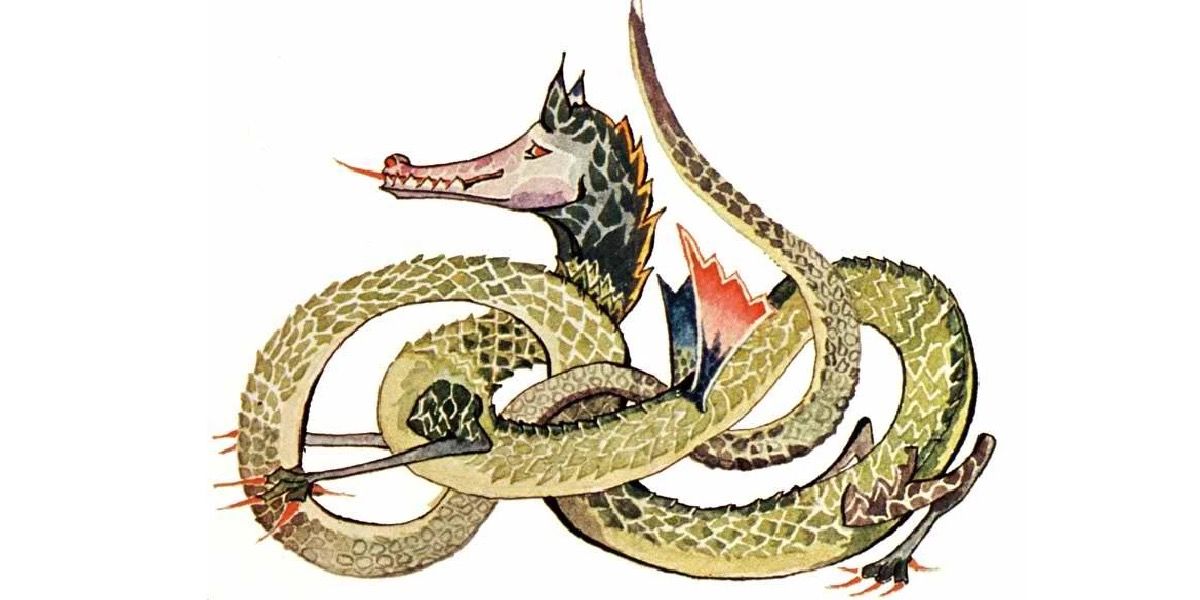
During the First Age of Middle-earth, the Dark Lord Morgoth spread terror across the land as he attempted to rule all of Middle-earth. Tolkien used him as a part of what amounted to a creation story for his imaginary world, echoing cultural myths such as the Christian fall of paradise and the Greek tales of Cronos and Rhea. While having the same goals and ambitions as Sauron, Morgoth was far more powerful and an even greater threat to the world. During Morgoth’s reign, he bred a series of vile creatures and entities, the strongest of which were the dragons. The first dragon created by Morgoth was known as Glaurung, a wingless worm capable of hypnotizing both Men and Elves. He plays a critical role during the First Age, particularly in Túrin Turambar’s tragic hero’s journey.
Known Dragons in Tolkien’s mythology:
Glaurung — known as the Father of Dragons
Ancalagon — the largest dragon to ever exist
Scatha — killed by the ancestors of the Rohirrim
Gosthir — whose name means “terrifying appearance”
Smaug — the last dragon to be seen in Middle-earth
The dragons that followed Glaurung possessed the ability to fly. Although there are only five named dragons in the story, all of them are technically capable of breathing a fire so hot that it could have melted all the Rings of Power — except the One Ring. Thankfully, Smaug was killed long before the events in The Lord of the Rings. While he might not have joined forces with Sauron, he was certainly not a friend to the people of Middle-Earth, and his occupation of the Lonely Mountain would have kept a powerful stronghold out of their hands: making Frodo and Sam’s journey almost impossible. (Gandalf’s involvement in the events of The Hobbit is intended partially to correct this state of affairs: returning the dwarves to their ancestral home and providing a ready hard point to resist the armies of Mordor.) However, despite Smaug’s incomparable strength, intelligence, and cunning, he couldn’t hold a candle to the biggest dragon in Lord of the Rings.
That title belongs to Ancalagon the Black, a truly massive dragon bred by Morgoth in the deepest pits of Angband. His name can be loosely translated to mean “biting storm,” a fitting epithet for such a monster. Nobody knows anything about this creature’s origins — some fans posit that Ancalagon could have been a transfigured Maia, whereas others suggest that he was birthed from the filth of the world itself. Whatever the case may be, there’s no doubt that Ancalagon was Morgoth’s most fearsome and formidable weapon. According to Gandalf, however, “not even Ancalagon the Black… could have harmed the One Ring, the Ruling Ring, for that was made by Sauron himself.” As such, there are clear limitations to the dragon’s powers.
Ancalagon Would Have Towered Over Smaug
Ancalagon First Appeared During the War of Wrath
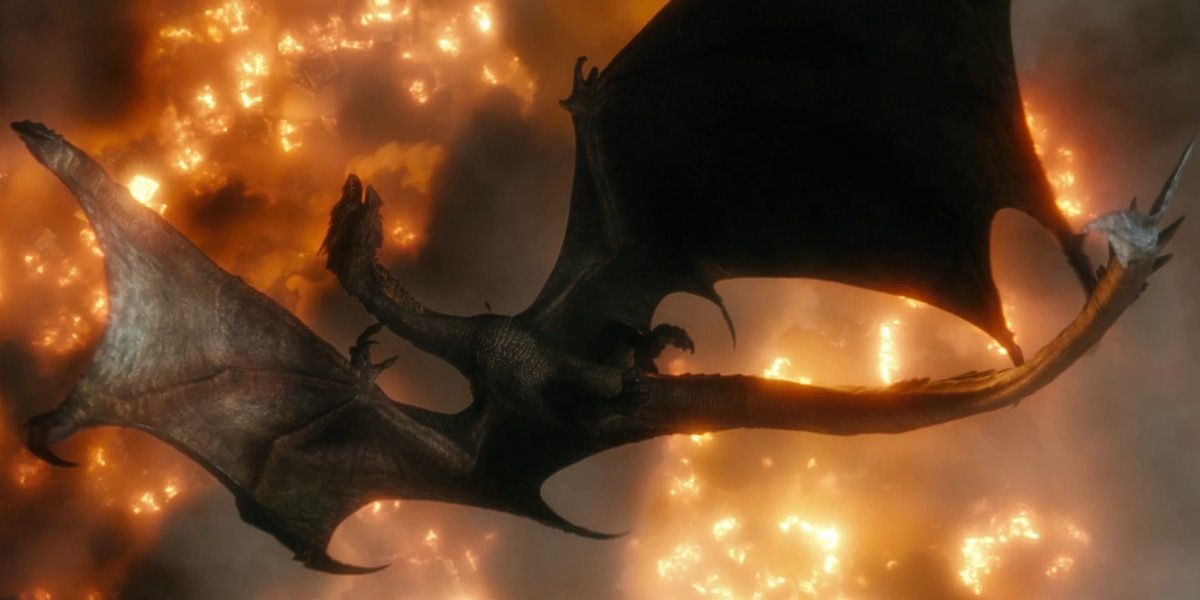
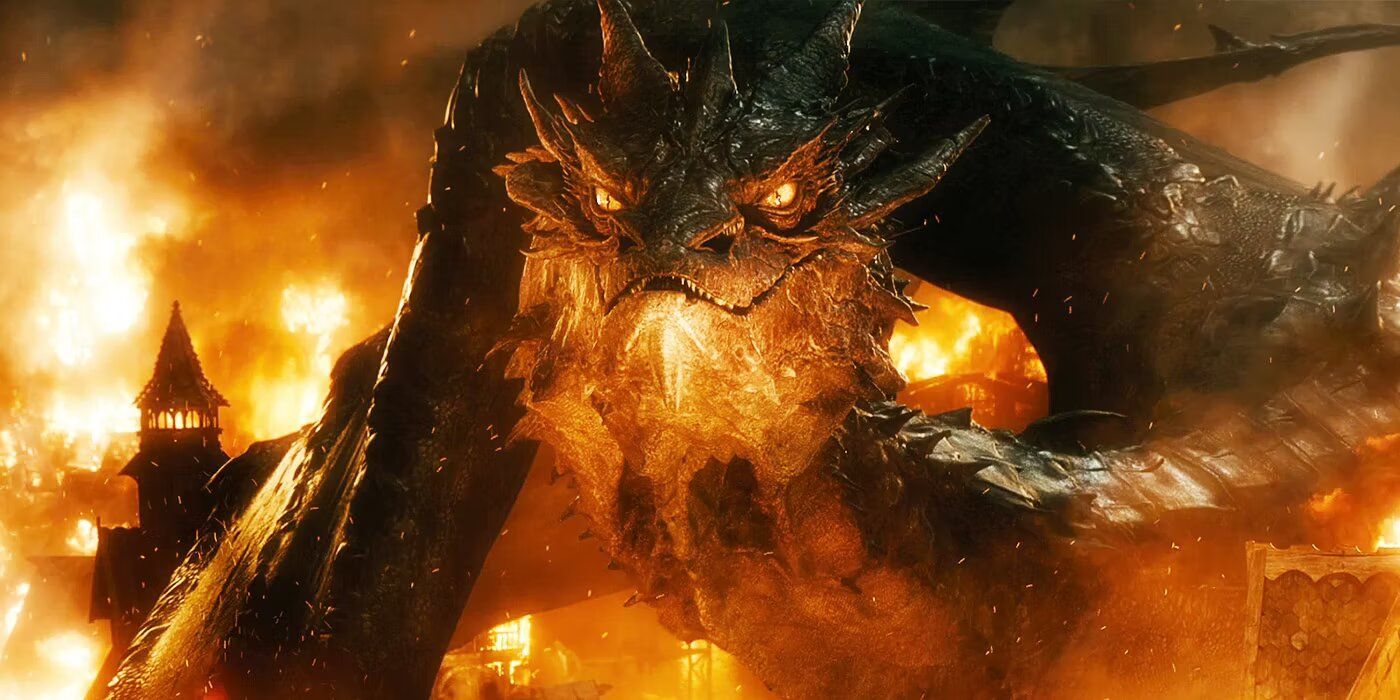
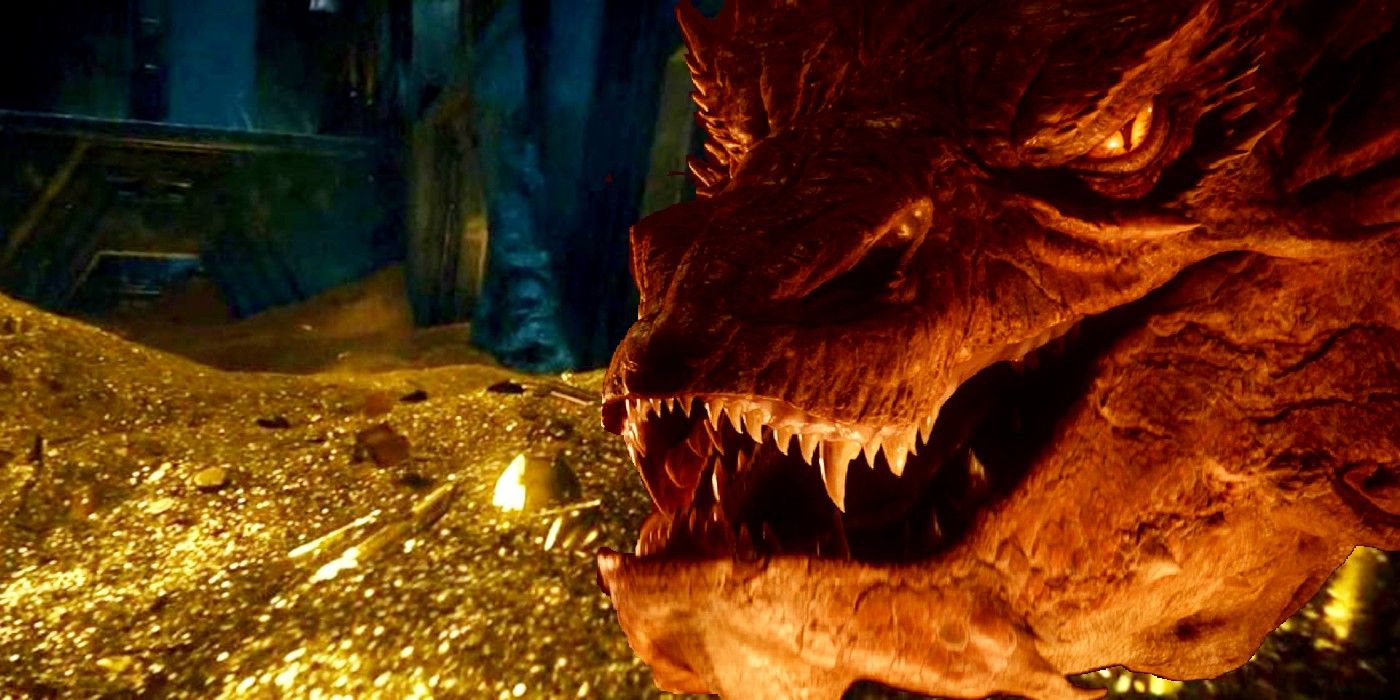
Ancalagon’s precise height is never given. Still, he is described to be “as tall as a mountain” and could block out the sky as he flew overhead. So, the Men and Elves didn’t stand a chance as the dragon destroyed their lands and laid ruin to their armies. Ancalagon the Black made his first appearance during the War of Wrath, a series of battles that would mark the end of Morgoth’s malevolent reign over Middle-earth. When the Valar’s armies overwhelmed the Dark Lord’s multitudes, he decided to play his final move: the release of the dragons from Angband.
Led by Ancalagon, the dragons wreaked havoc upon the forces of the Valar. And as is typical for Tolkien’s works, the great Eagles were forced to intervene. Thorondor, the leader of the Eagles and the ancestor of Gwaihir, fought the winged dragons in the sky along with Eärendil’s help. The elf-lord arrived “shining with white flame” and slayed “Ancalagon the Black, the mightiest of the dragon-host, and cast him from the sky.” Ancalagon subsequently “fell upon the towers of Thangorodrim, and they were broken in his ruin.” In other words, he was large enough to destroy the three volcanic mountains constructed by Morgoth as well as the surrounding landscape. Thangorodrim was thousands of feet tall at the very least, making Ancalagon exponentially bigger than Smaug.
Dragon Names
Alias/Epithet
Possible Eytmology
Appearance
Death
Ancalagon
The Black
“Biting Storm”
First Age 510
First Age 587
Smaug
The Golden
“Worm”
Third Age 2000–3000
Third Age 2941
Smaug’s lifeless body was just the right size to obliterate the town of Esgaroth, so he wasn’t exactly a small beast. But he was small enough to fit under the Lonely Mountain atop his horde of treasure for many years, and for all his terrifying power, Bard the Bowman slew him with just a single arrow (though admittedly it was aimed at his one weak spot in a quiet nod to the Greek myth of Achilles). Meanwhile, Ancalagon’s fall managed to terraform an enormous chunk of land, presumably changing the geography of the area forever.
Were There Other Monstrous Creatures In Middle-earth?
Dragons Were Hardly The Only Monsters In Tolkien’s World
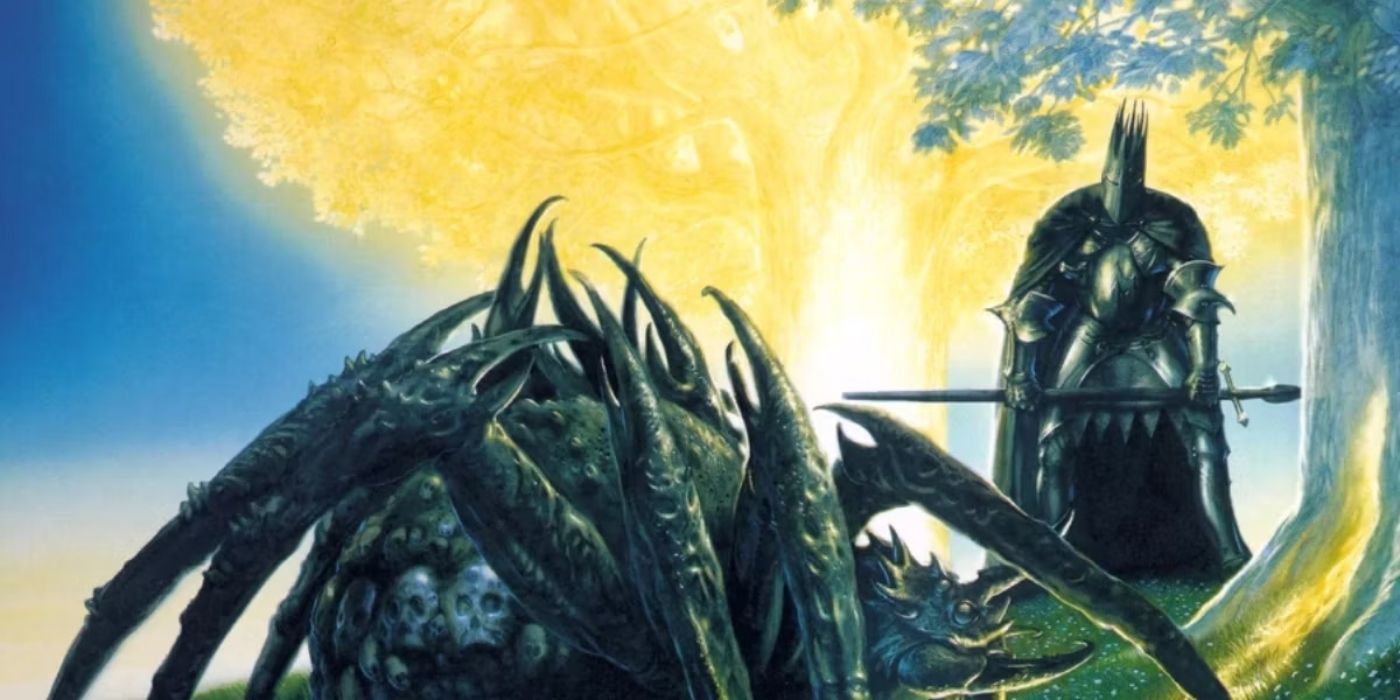
There’s precedent for among Middle-earth’s other monsters as well, most notably Shelob: the giant spider who guards the secret passage into Mordor. As terrifying as she is, she’s simply a smaller version of her ancestor, Ungoliant who forged an alliance with Morgoth and poisoned the two Trees of Valinor at his behest, only for Morgoth to betray her. His Balrogs drove her off, and she remained hidden for the rest of her days. Like Ancalagon, Ungoliant was much larger than her kin in the Third Age, and her battles resulted in truly cataclysmic changes to the landscape.
Middle-earth Monsters
Alias
Associated Locations
Ungoliant
Gloomweaver
Lammoth, Nan Dungortheb, Avathar
Shelob
Sauron’s “Cat”
Nan Dungortheb, Torech Ungol
The Balrogs
Valaraukar
Angband, Khazad-dûm
The Watcher in the Water
Unknown
Lake of Sirannon
All these details make the First Age sound like a terrible time to be alive, which was very much the point. Figures like Ancalagon and Ungoliant are akin to the Titans of Greek mythology and similar godlike beings whose clashes shape the worlds later occupied by heroes and villains. Luckily, however, the monstrosities of Middle-earth faded over time. And, with the defeat of Sauron and the Age of Men beginning, the giants of the world would seemingly disappear altogether. That said, fans still remember Gandalf’s ominous words — “F ar, far below the deepest delvings of the Dwarves, the world is gnawed by nameless things. Even Sauron knows them not. They are older than he.” There might well be an ancient monster that dwarfs even Ancalagon the Black.

